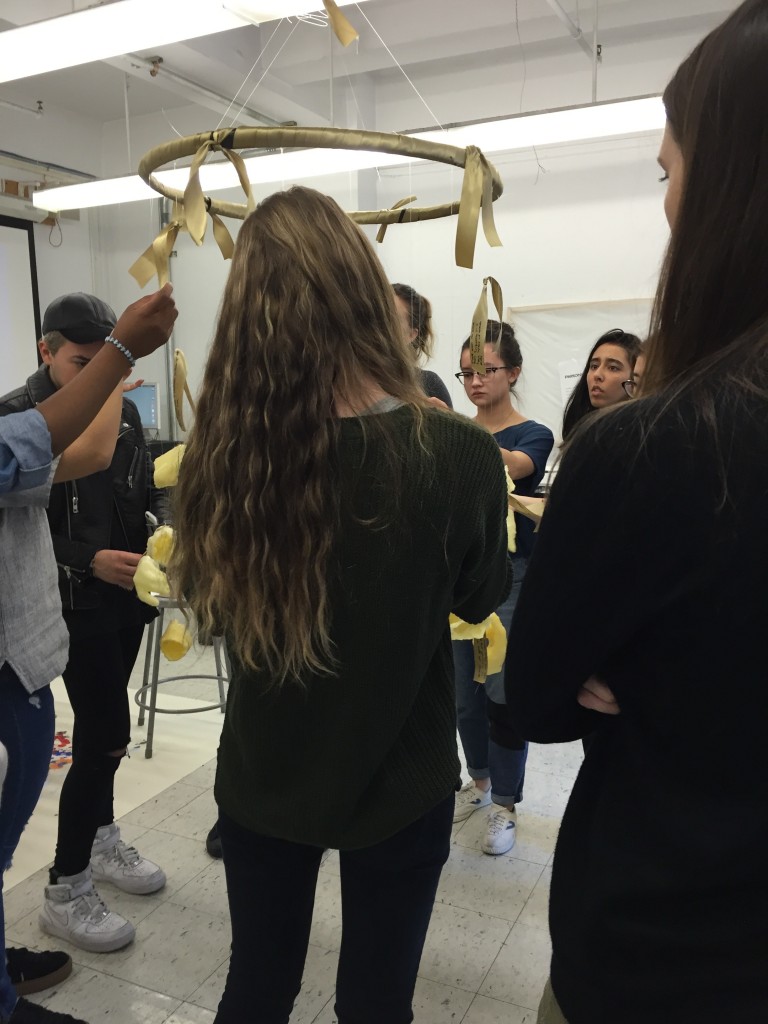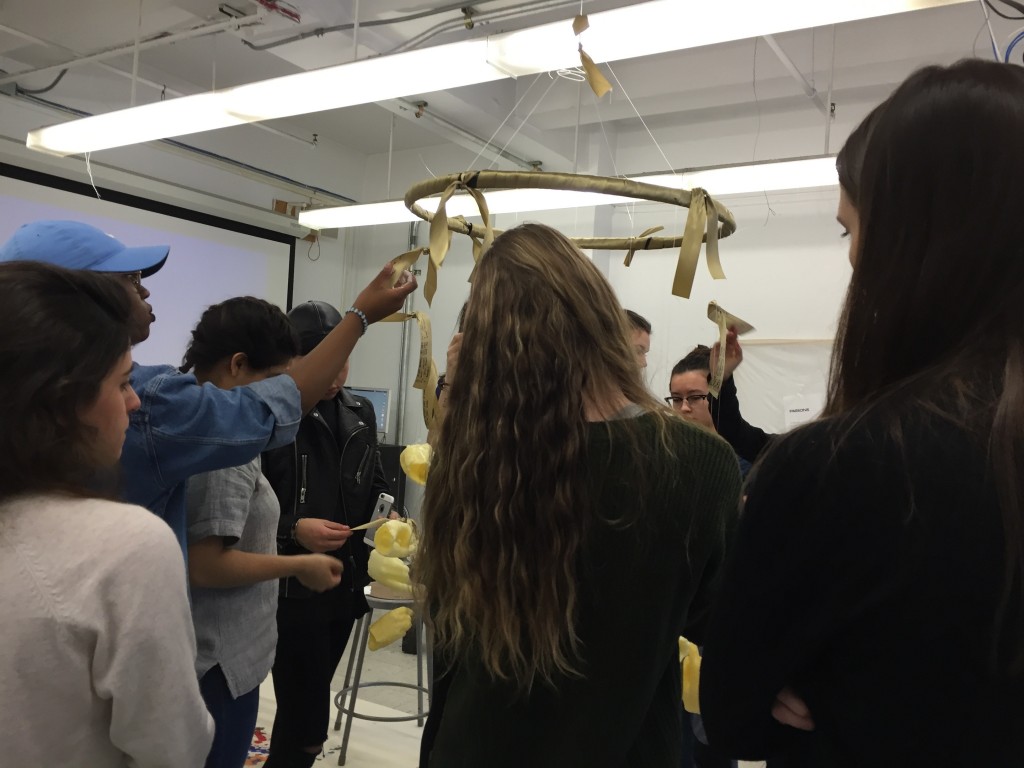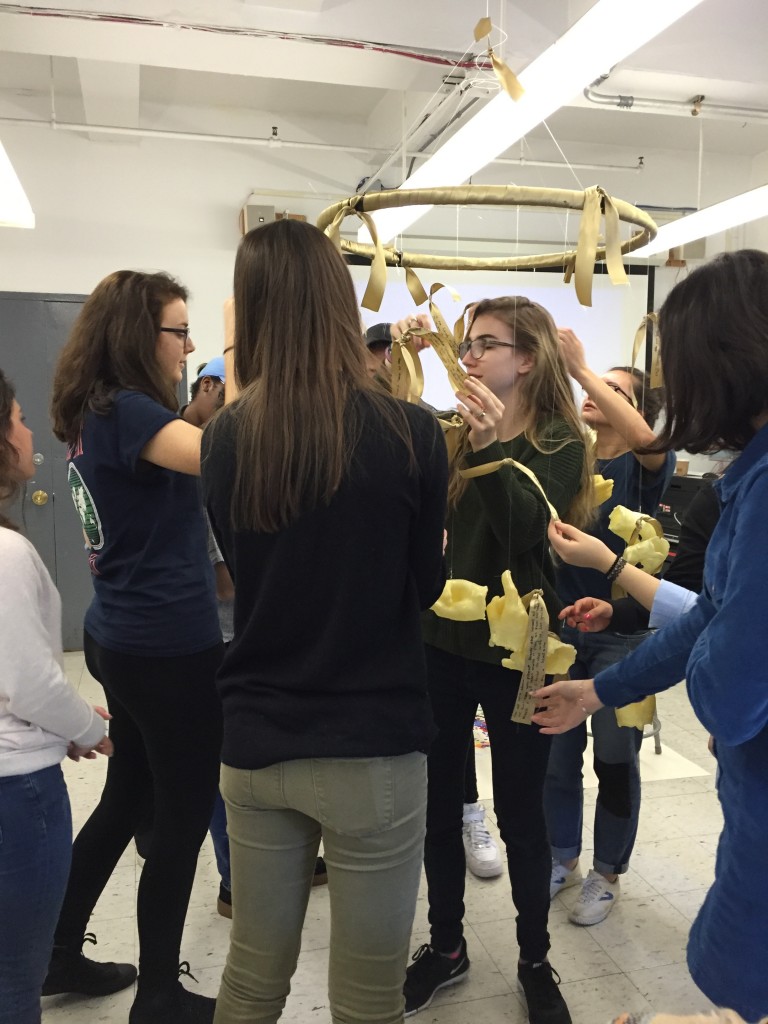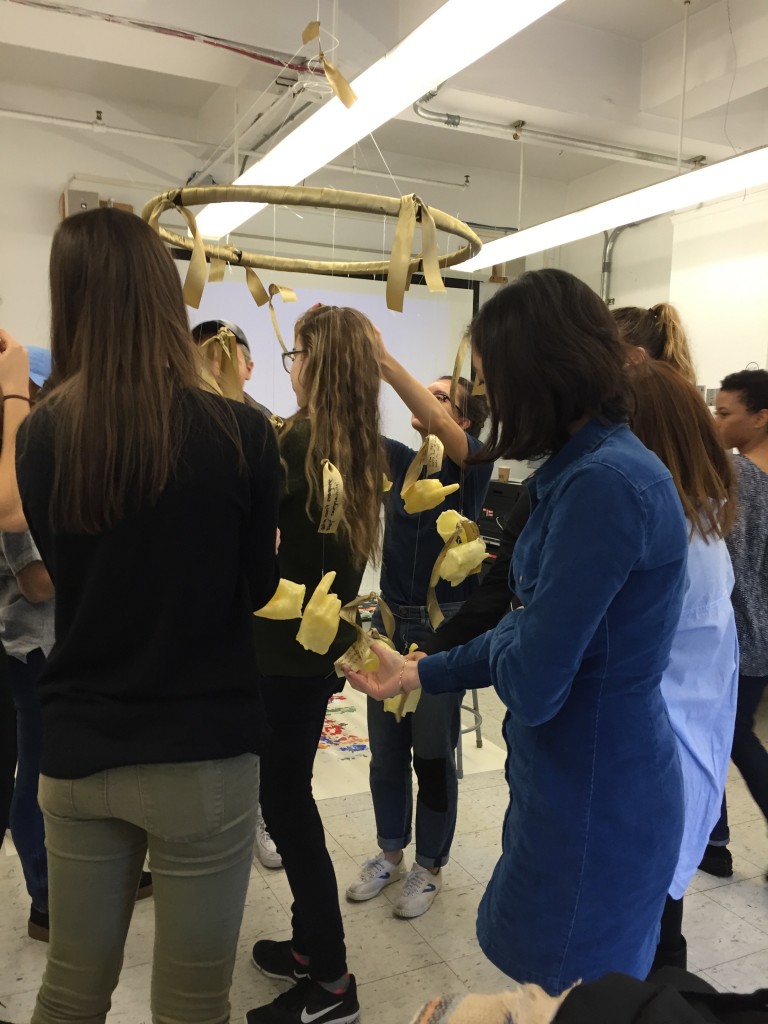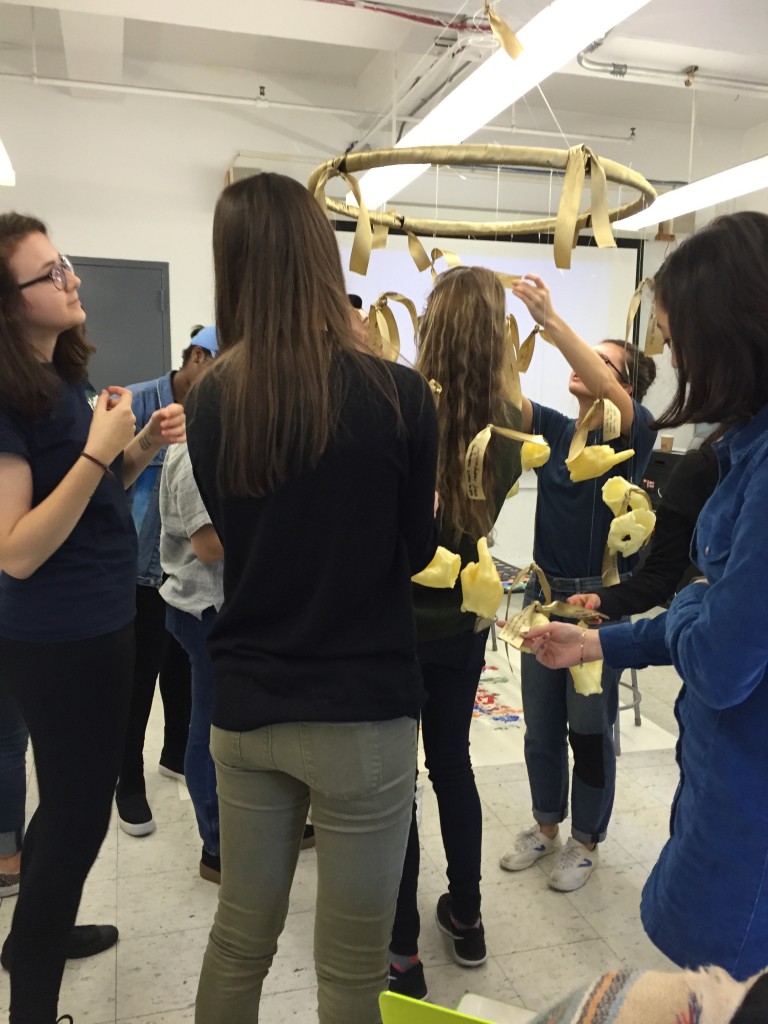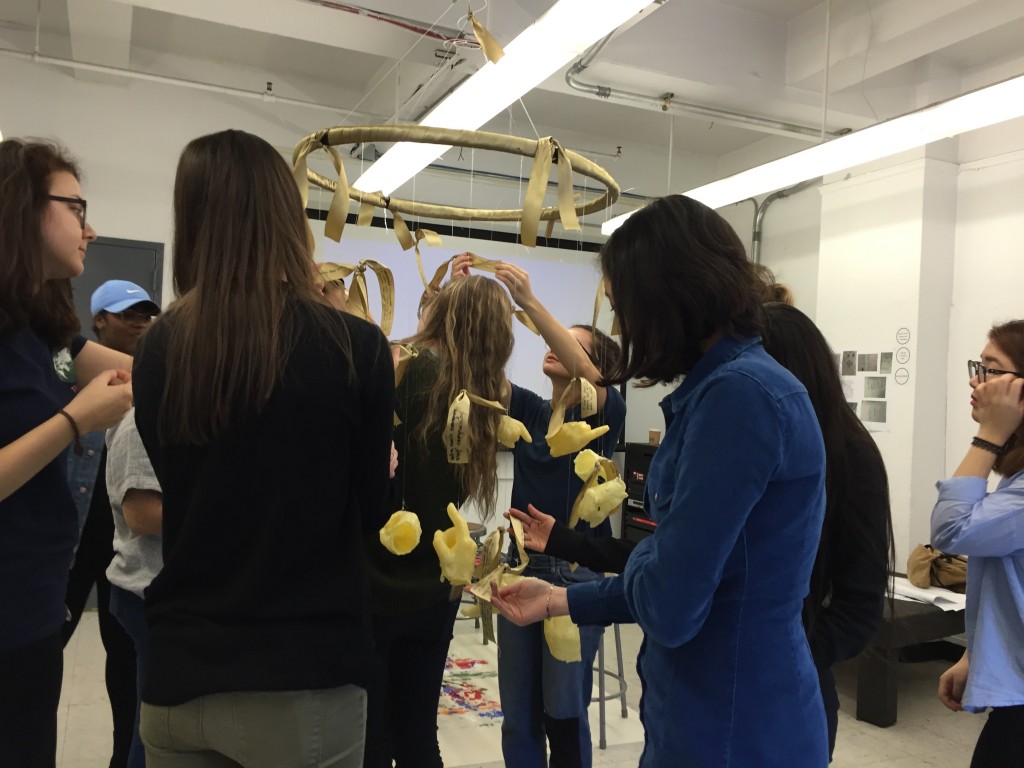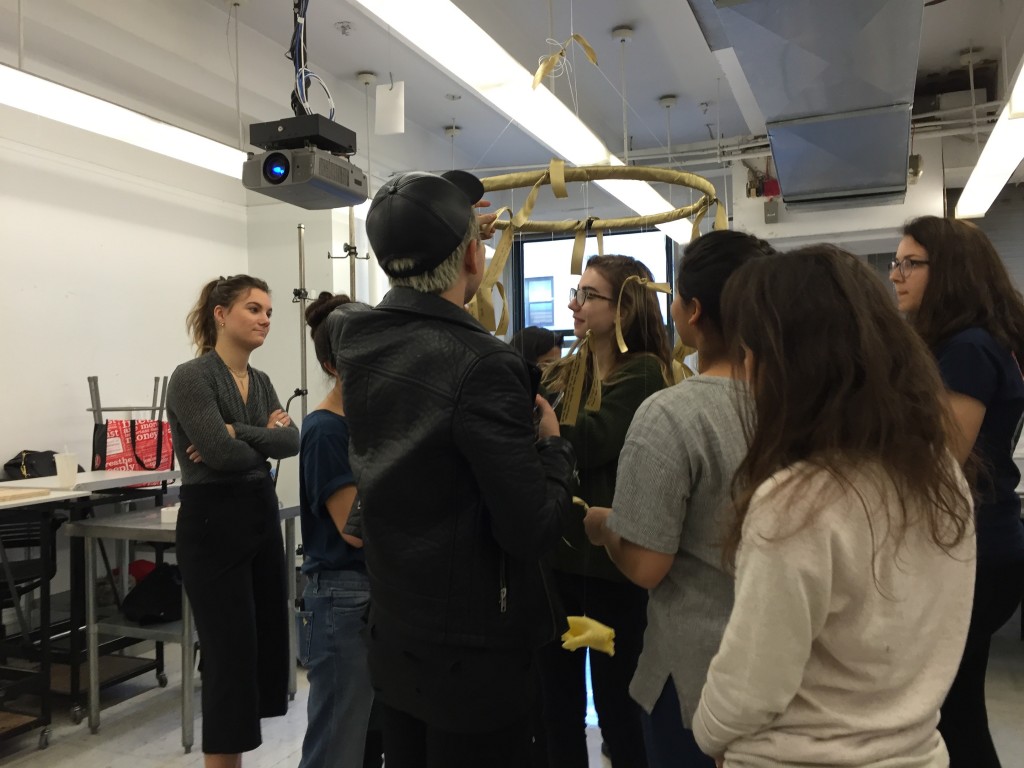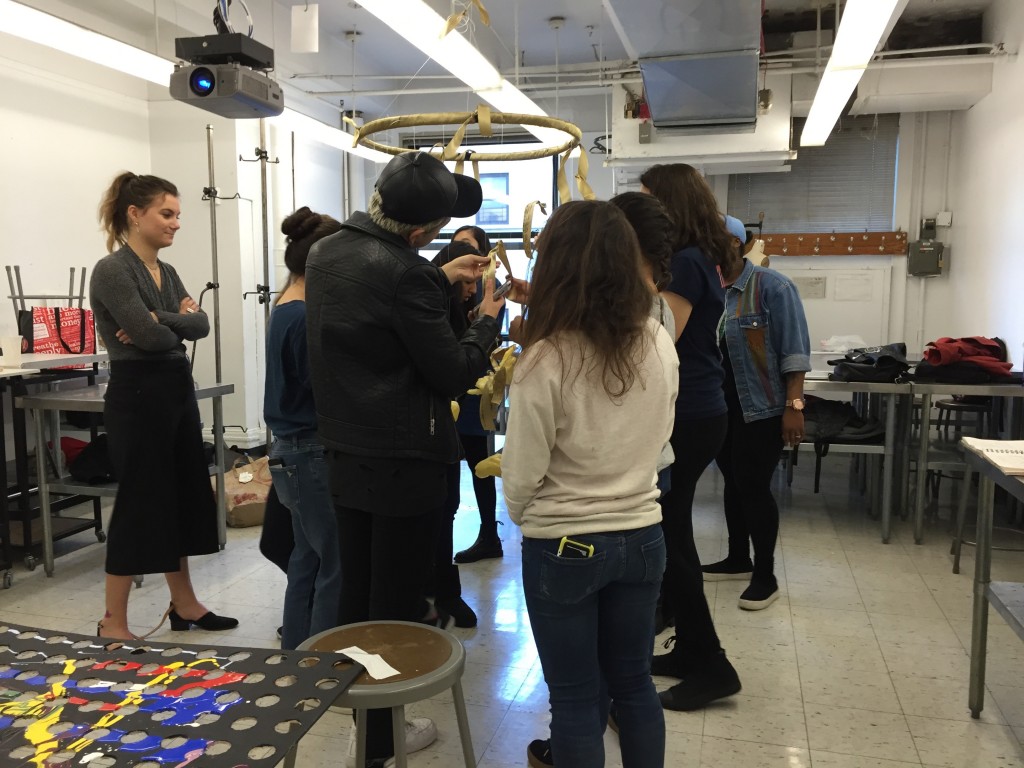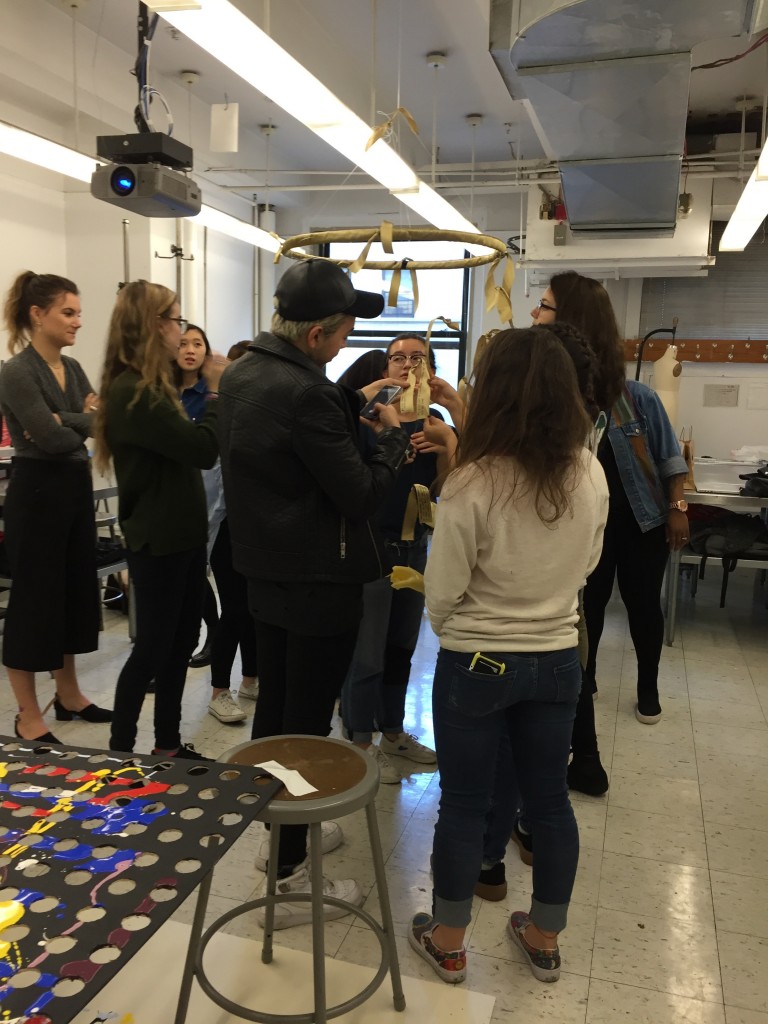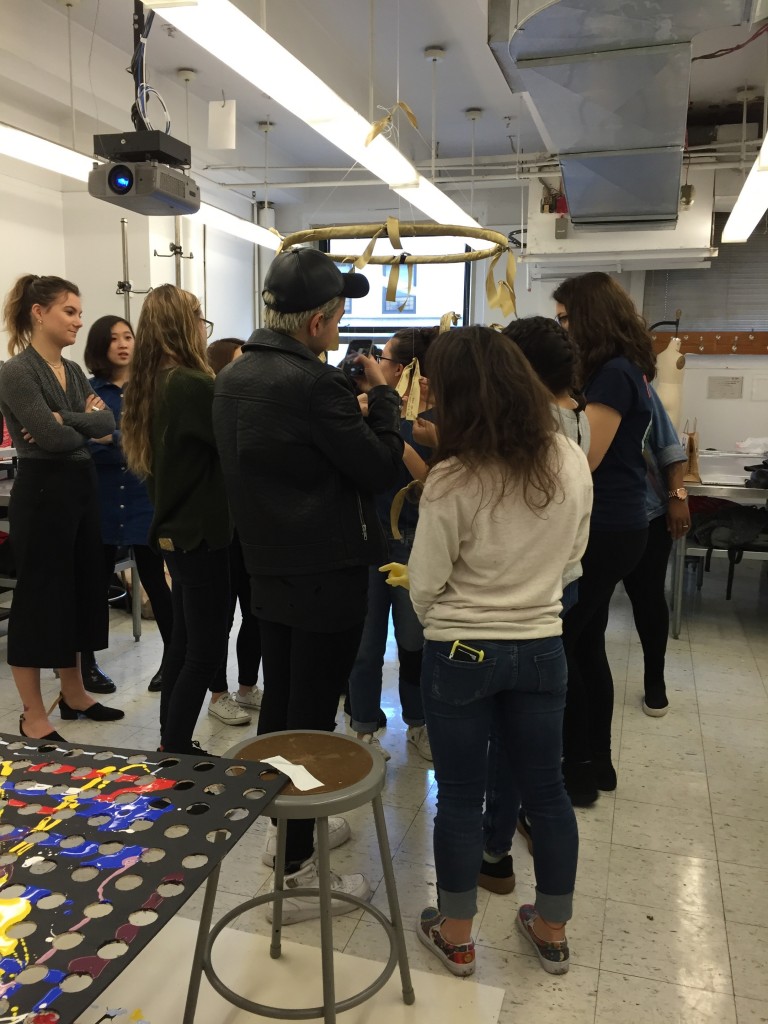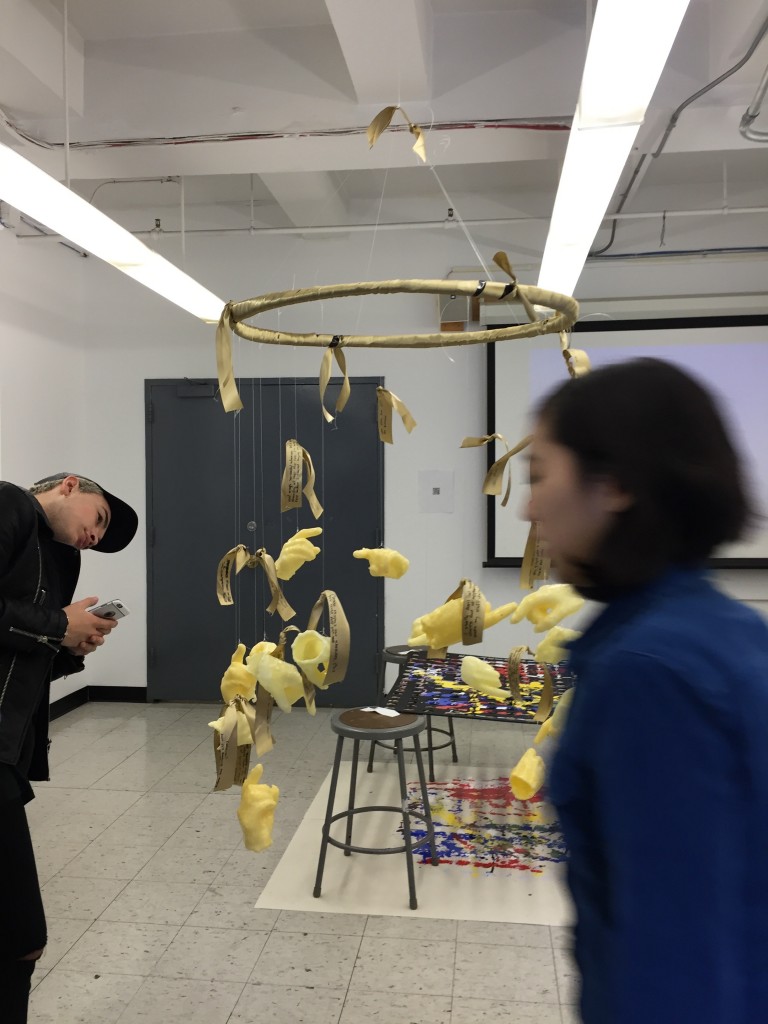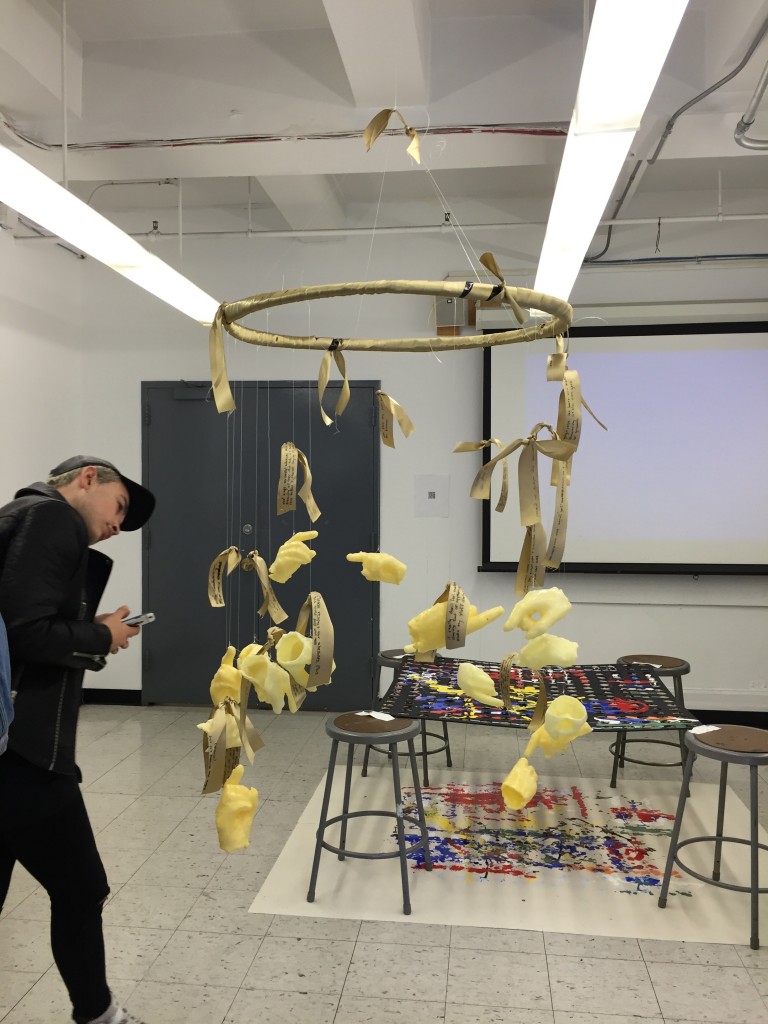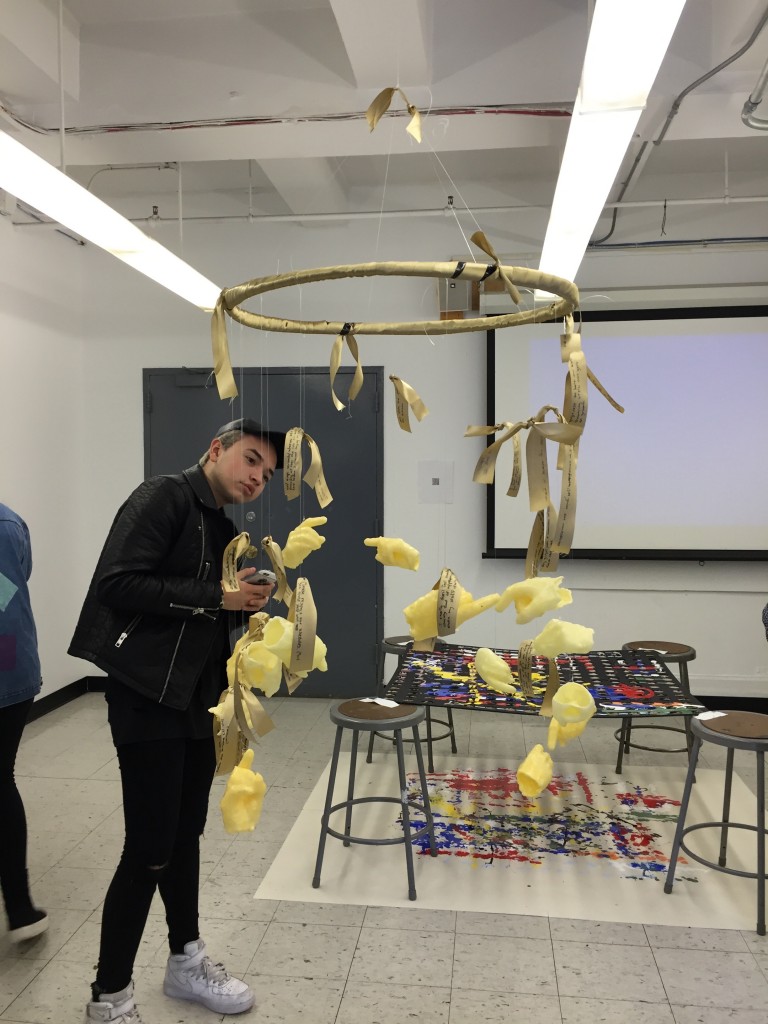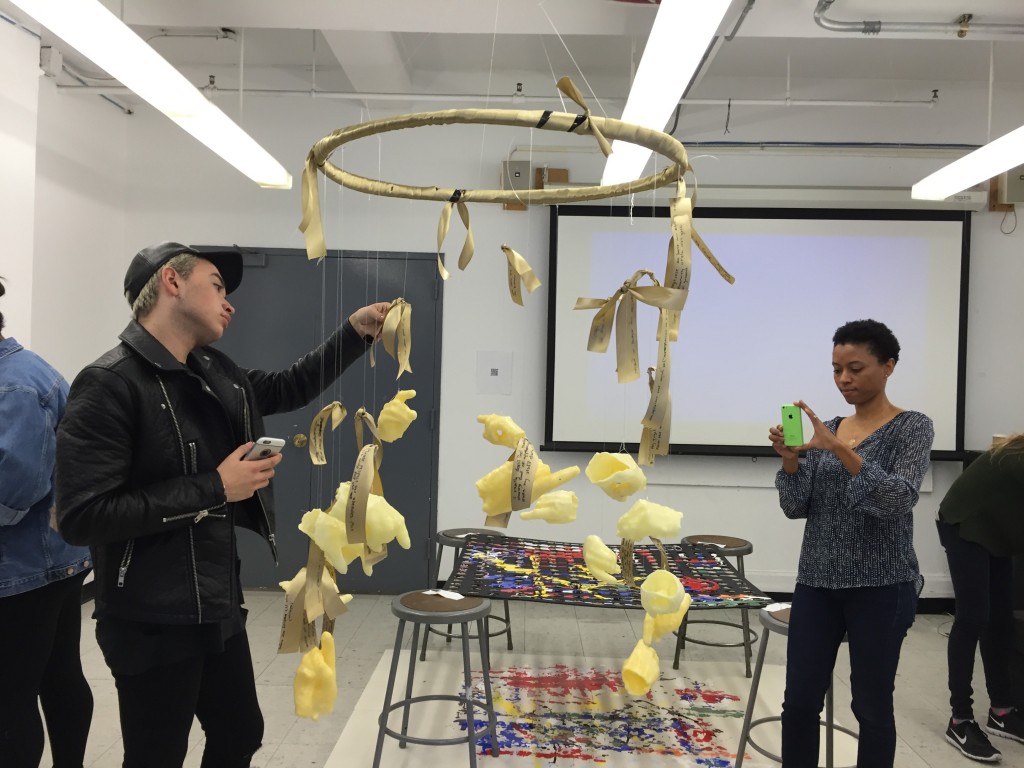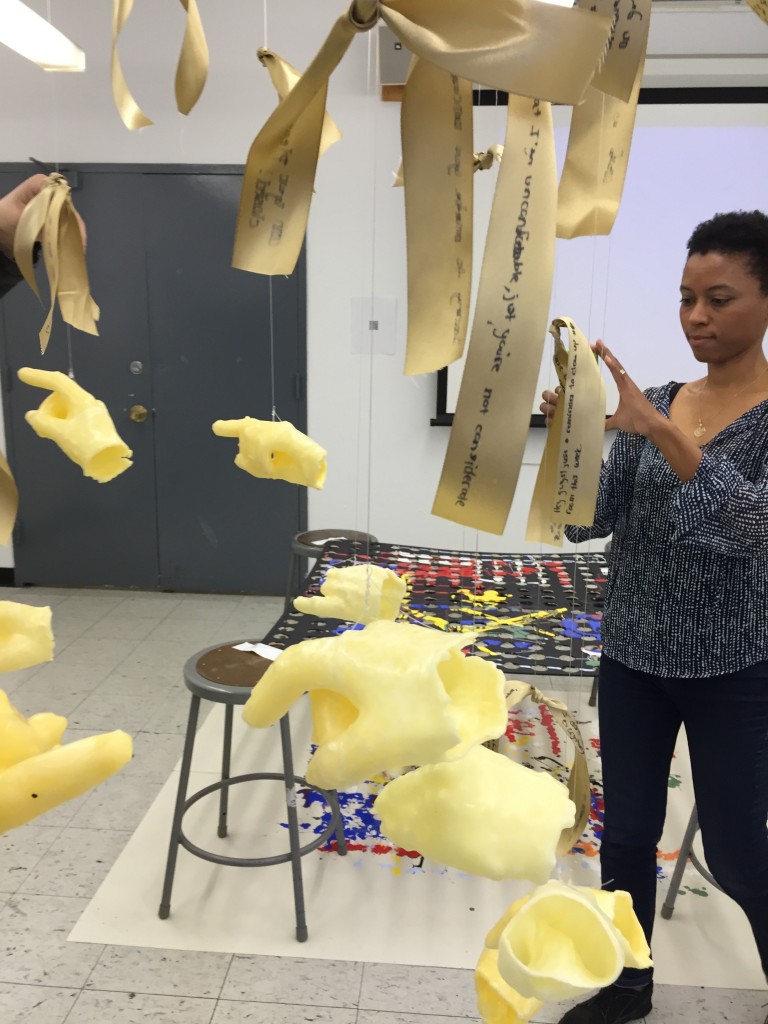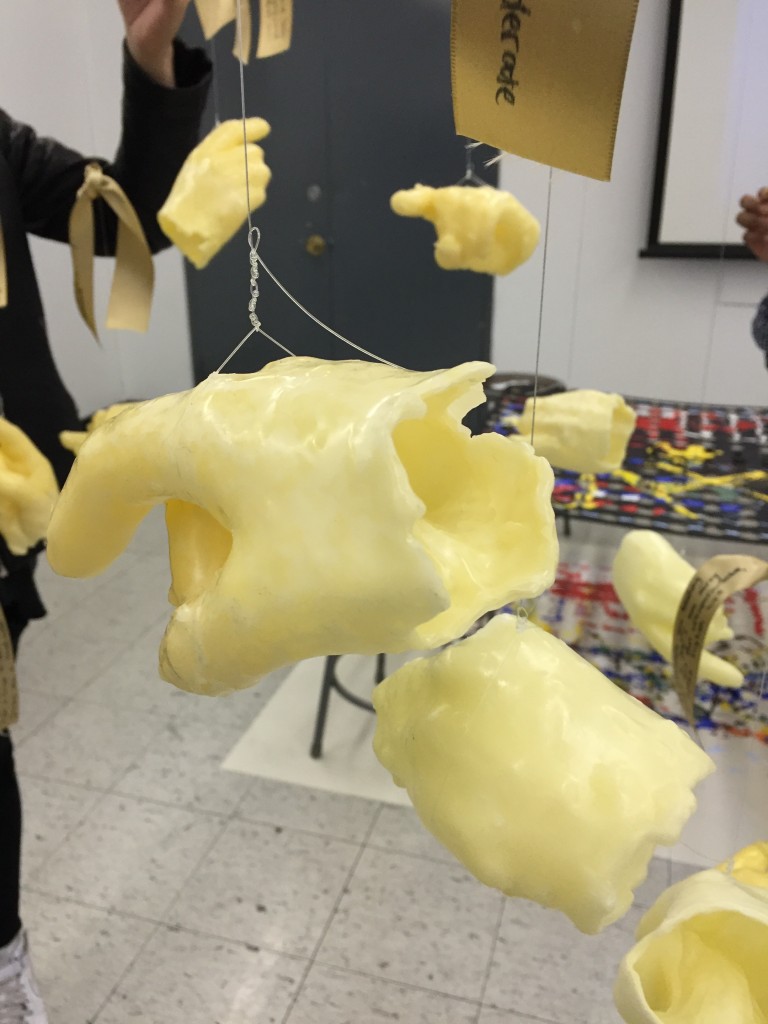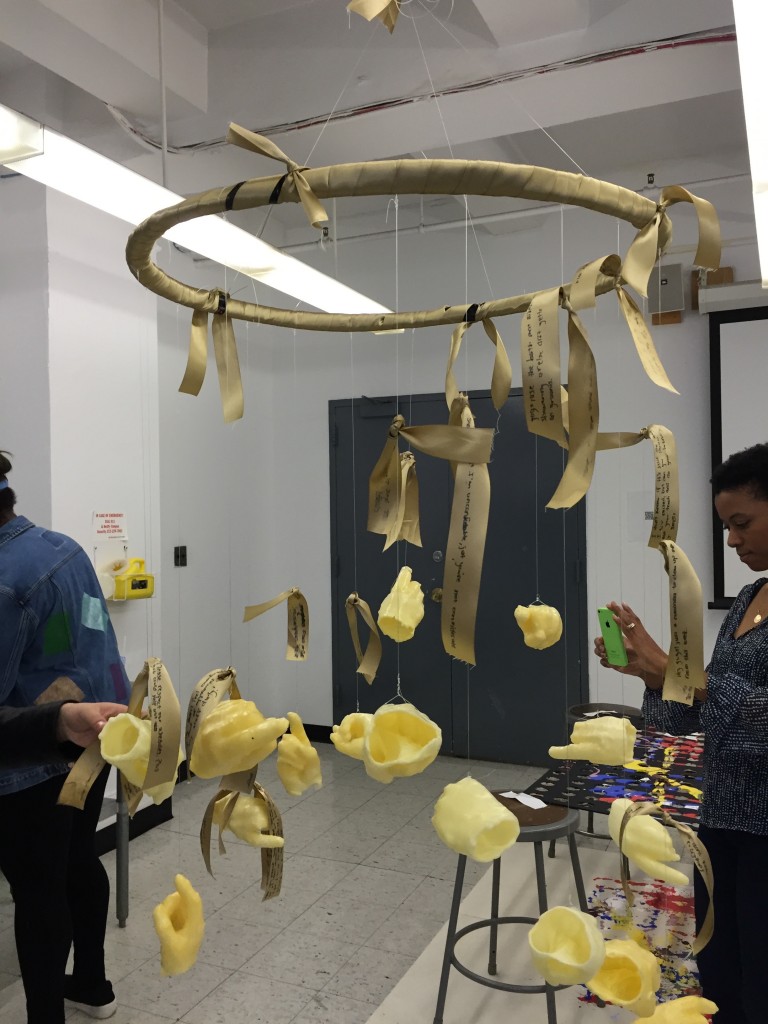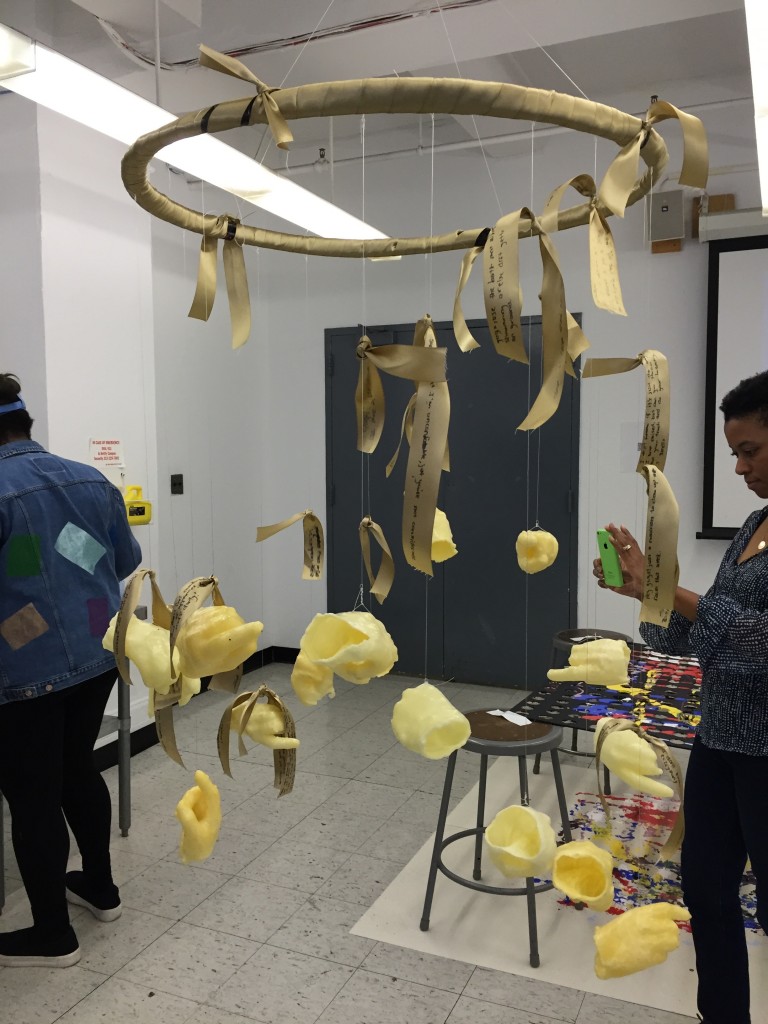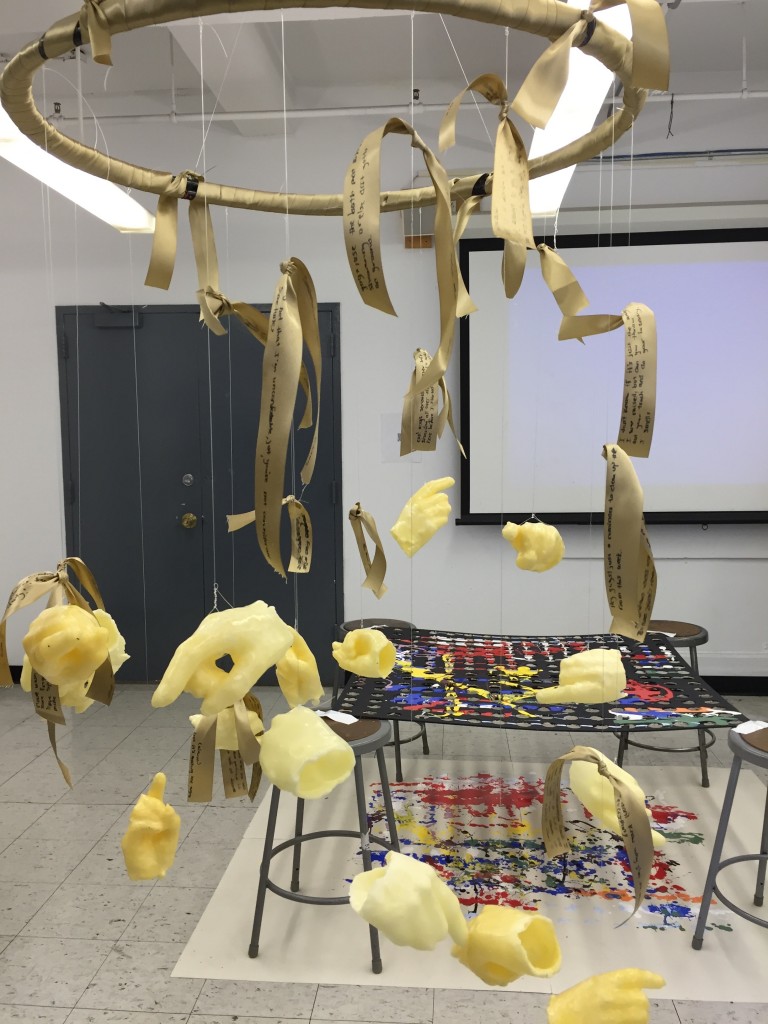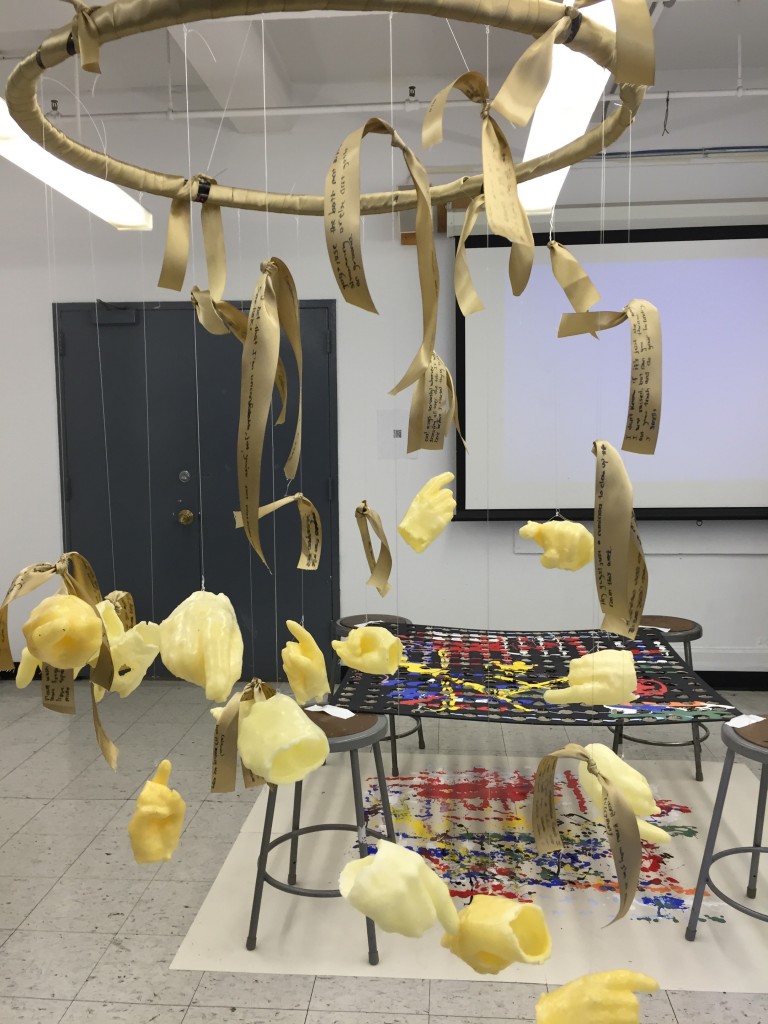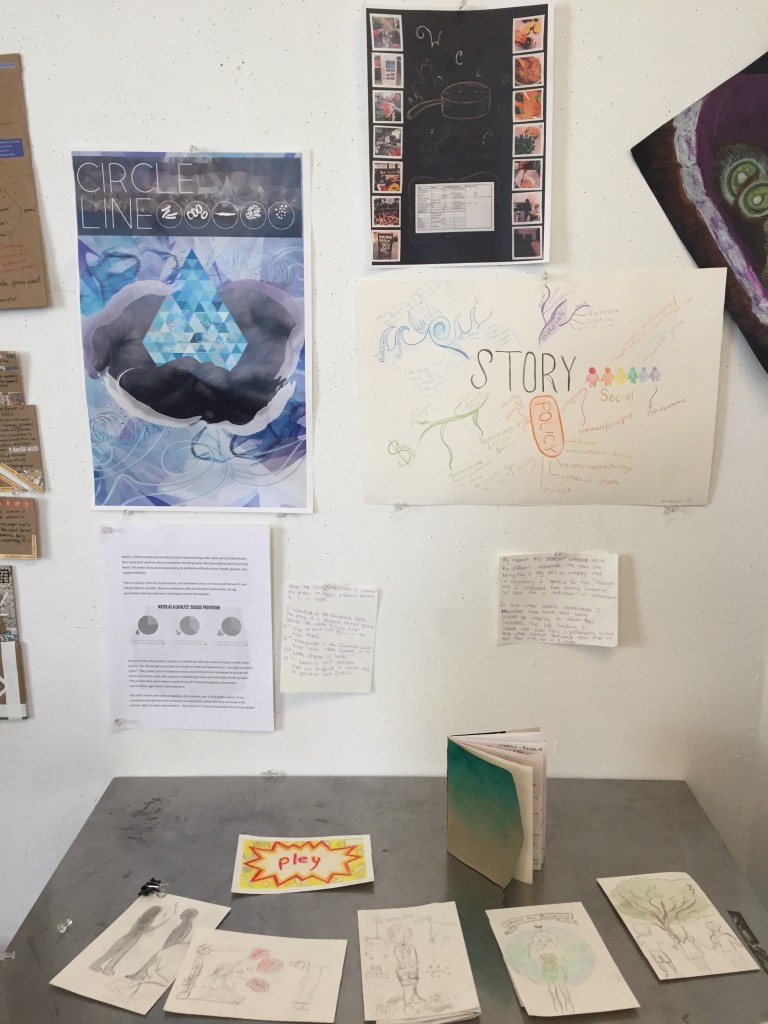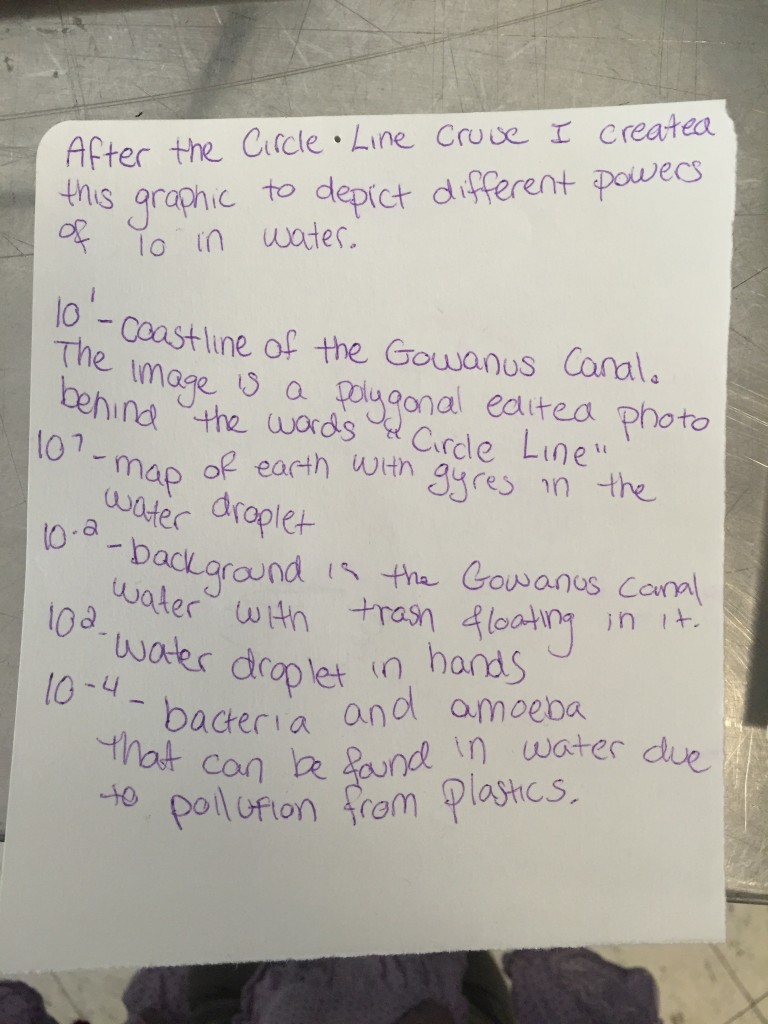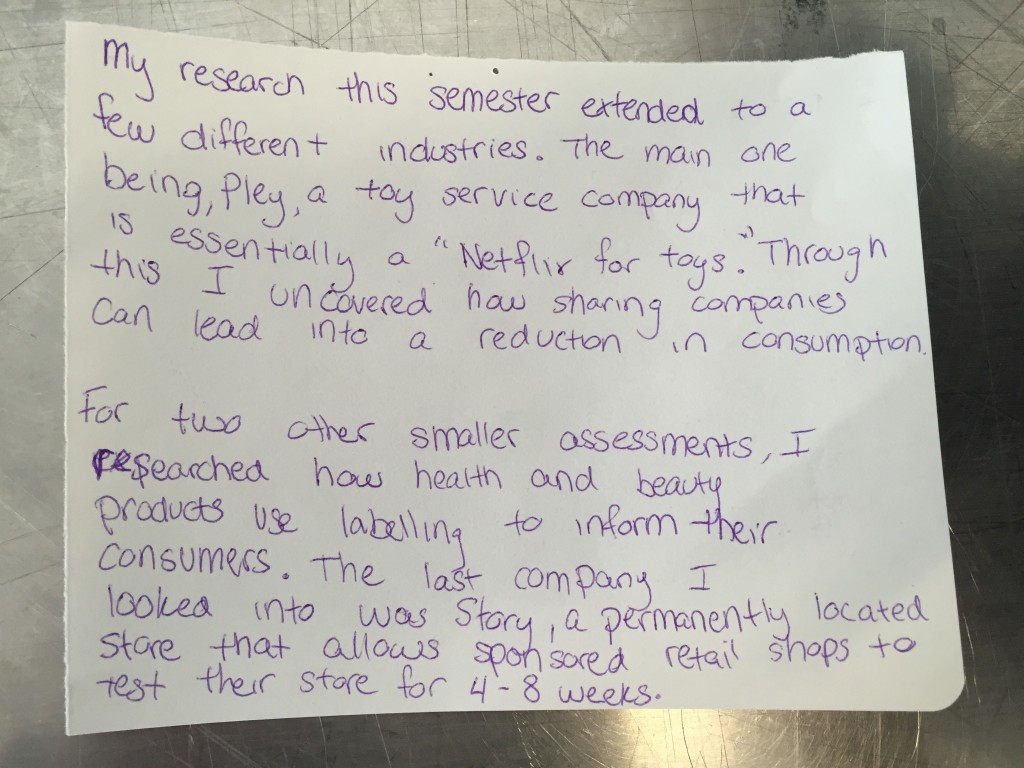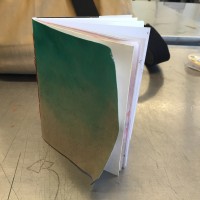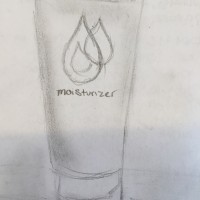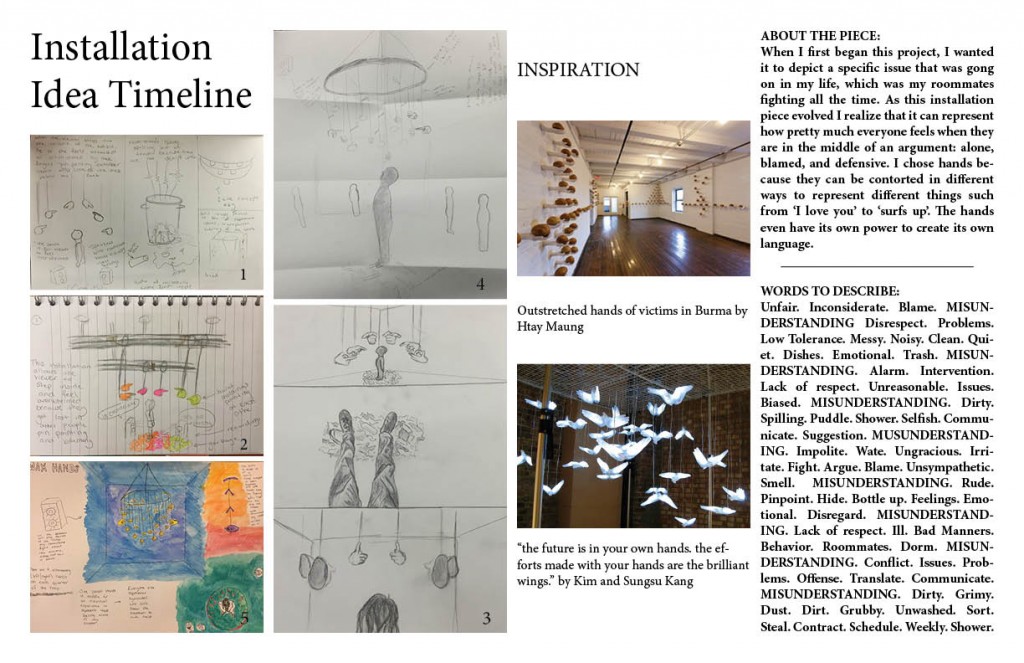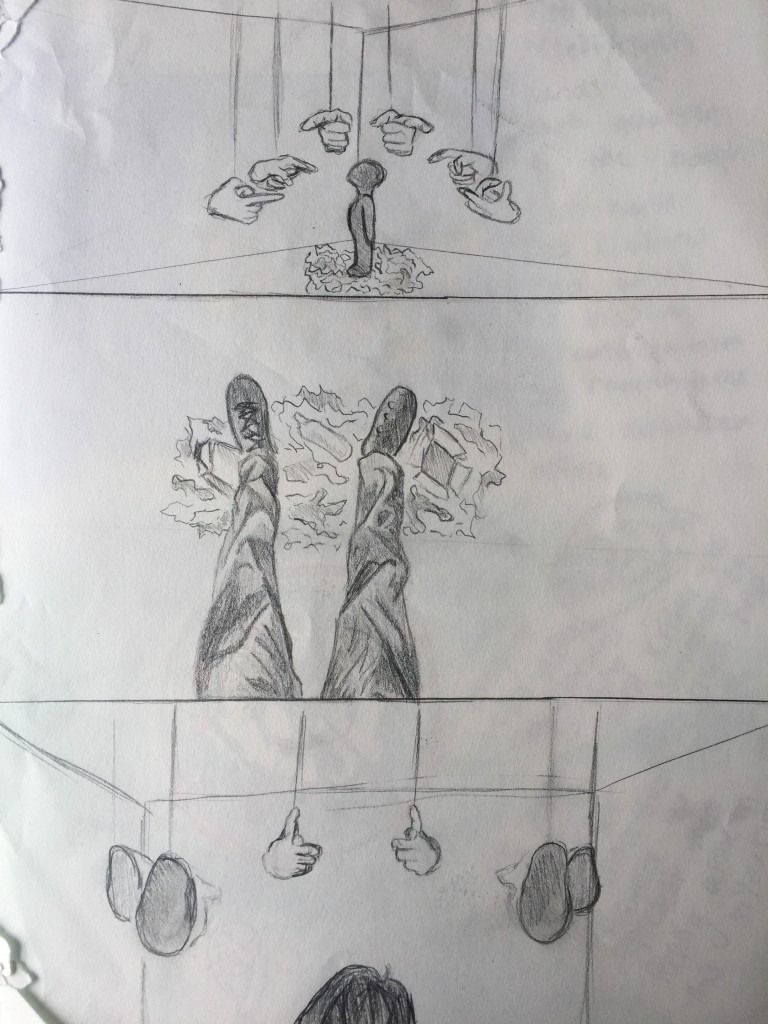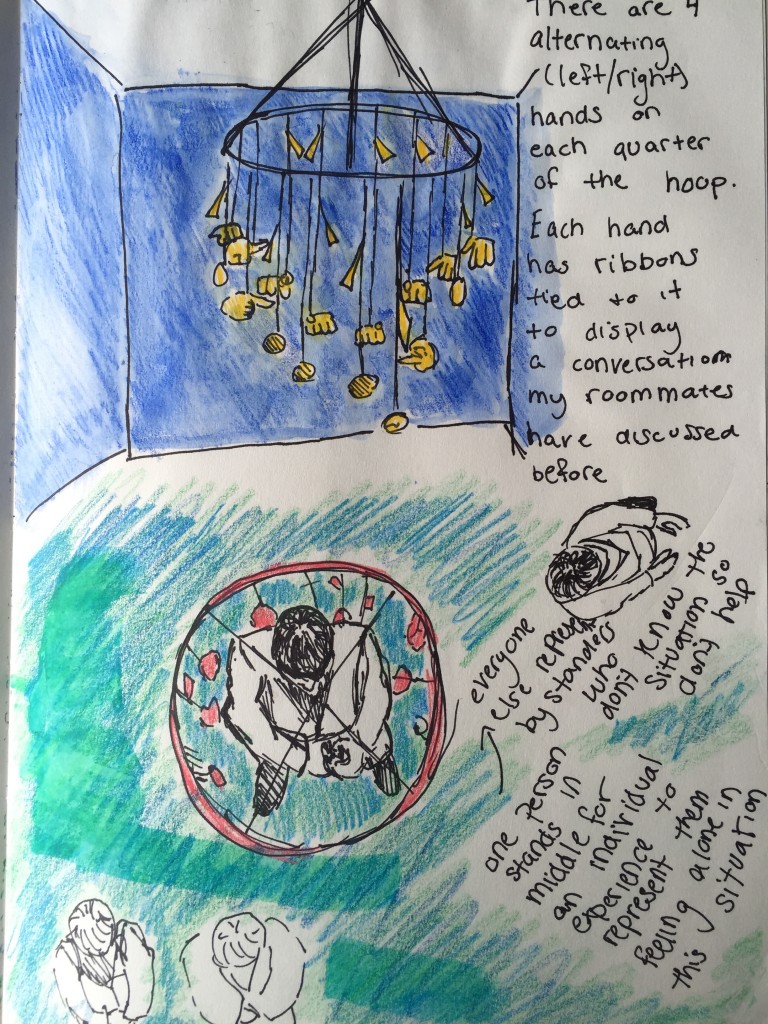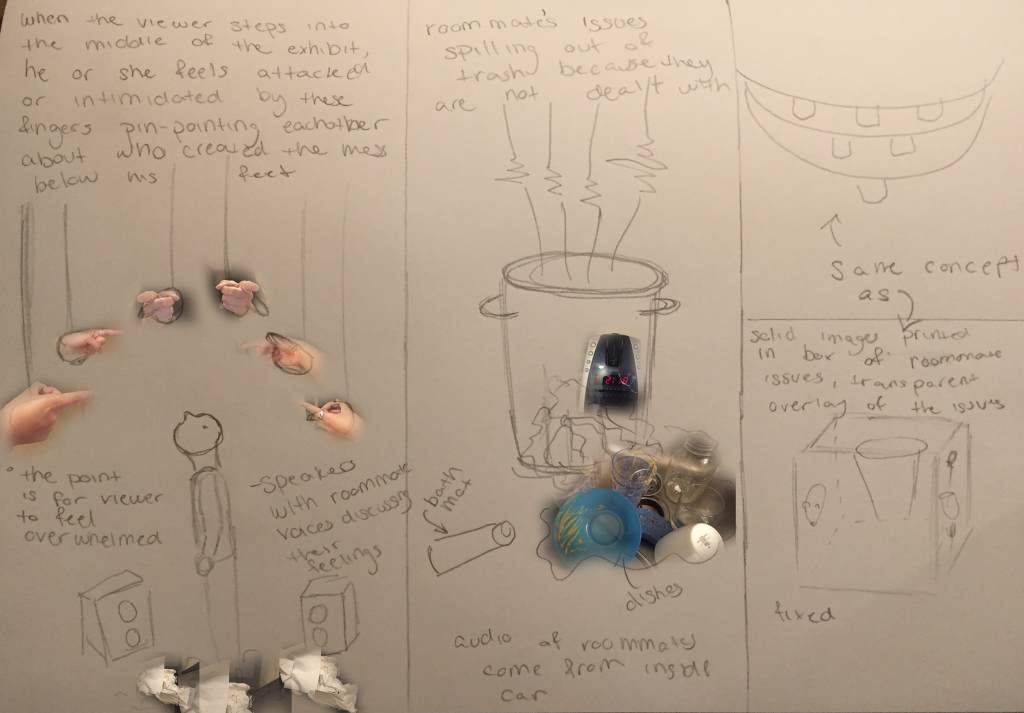Melrose Interviews
Month: December 2015
Final Presentation – Vinegar Hill Food Application and Street Lights
Interviews:
Artist Book
Artist Book Forward by Mitali Mehta – “The Life and Times of Amanda Wu”
Intelligent, clever, humble and modest is the personality of Amanda Wu that came across to me, when I first met her. While interviewing her, I found her very open and she freely spoke about her personal and social life. With a straight face, she answered all my questions with confidence and poise.
Born in Morristown, New Jersey, Amanda moved to Basking Bridge when she was three. Her brother was born in Warren, New Jersey where she grew up. The family grew so they moved to a bigger house in a suburban area. This place had a lot of high class people and the houses were spread out.
Amanda told me that her childhood was good but there were family issues and some social anxiety. She has strict parents which is good as it has made her a better person and enhanced her personality. Her Dad is originally from Taiwan and her Mom is from Philippines, and is half Spanish. Her Dad travelled a lot as her grandfather worked in the Taiwan embassy. Today both her parents own an ecommerce site and they work together. She said, “My dad tended to be the stronger personality in the family and my Mom is the more lenient one”. She has a younger brother, Nick, whom she is closest to.
When Amanda was young, she was a lot happier and carefree, but in high school more work pressure came her way. She says softly with a smile, “I was a typical happy girl”. While growing up certain issues about her social and personal life would make her depressed. She would mostly discuss these issues with her Dad. Life became tougher and stressful when she had to apply to colleges.
Amanda likes to listen to music and has a lot of favorite bands like ‘Panic at the Disco’, ‘Twenty One Pilots’, ‘Hasley’ and ‘Marianas Trench’. She used to play tennis in school but could not keep up with it, as sophomore year was all about studies. In school she had a group of close friends out of which she had known four of them since the beginning. She is still close to a few of them but being in college they are not in touch that often.
Amanda feels that she is understanding but complains a lot. She tries to be generous and kind, but things don’t always turn out the way she wants them to. She is also opinionated sometimes. When I asked Amanda about her accomplishments in life, she jokingly says, “I have 5K followers on Tumbler!”. Her posts on Tumblr include paintings, sketches, photography and her work process. Her work is exceptional and special which makes it worth seeing. She spends her day by sleeping, eating and working.
Amanda’s interest in art grew when she took it up in high school. She wasn’t really into it until grade twelve, which was last year. She had an art teacher, Mrs. Isusi, who really helped her develop her artwork. She says, “She helped me create a lot of art from observation, and had me play around with different mediums like charcoal and oil paints.”. Her Mom comes from an art background and her Dad’s father is fond of collecting art pieces. She had always wanted to do something related to business, marketing or ecommerce. Now she feels that she might do something in the field of design and creativity. Amanda enjoys working with mixed media and tries to incorporate as many things as possible. She likes minimalistic things and her work is straightforward. Her work is mainly about her life and feeling. I really like the first piece as it shows her dream city blended on her clothes and the word possibilities written on top. This shows that anything is possible in life, as long as you dream and work hard to conquer it. Something that I noticed in her artwork, is that, it revolves around a word. There is typography and graphics that symbolize the word and have a significance. I can see that she tries something new each time and comes up with great and unique ideas. She has got her own style of painting with minimal colors, yet making it so effective.
Parsons was the only art school that she applied to, while the rest were business colleges. She chose Parsons the New School for Design, as she always wanted to live in New York City and had heard a lot about the college when she was young. Her interest in art grew so much, that it made her choose art over business. Amanda wants to start her own business after college as her Dad doesn’t want her to work for another company all her life. “I want to work for myself and do my own thing.”, she says with confidence. She might want to start off working with a company, at a creative spot involving design.
Her family is what keeps her motivated. She has had a hard family life which she wants to change. She would like to become more independent and not rely on her family completely. Her Mom has supported her throughout and her Dad has helped her get to where she is today. Her Mom inspires her greatly, as she has gone through a lot of struggles in life which Amanda would not like to talk about.
The one quote that Amanda lives by is, “Never, never, never give up”. This shows in her artwork as she works hard on each piece and gives in her best. Tumblr is proof that she’s already got fans out there who appreciate her work. I’m sure that she will not give up and her talent will take her to the next level.
First Semester Reflection
This semester I have learned a lot about myself from the first Body Map Project to the area around me from the various mapping project based on places I travelled to both with the class and individually.
This course has mainly taught me how to cut noise and find organization even in a mass of chaos. We also were taught how to create a visual piece that sends a message without using our words.
For each field trip I used the same process to identify similarities within an area I would target and map out. I would always finish the day with hundreds of photos in my camera library to sort through and look for a common motif within them and then find a way to highlight these similarities. Sometimes I also would find a similarity while the class was walking around and take note of that and focus on those objects within the area we were shooting while also keeping my eyes peeled for other symbols of the neighborhood.
Most of my outcomes were produced digitally into a collage or some sort of layout. I do wish I had created more hand work and found different mediums instead. I definitely enjoyed the Brooklyn Waterfront project the most because the assignment was a surprise, which tested the class to feel a lot more immersed within the experience. Instead of searching and being so focused on the project, instead everyone engaged more with the trip and the location felt more personal.
I also enjoyed working on the artist book and reflecting on my works from before and after I had arrived to college and how much my work has changed. Before most of my art didn’t really seem to have a meaning behind it. They were just pictures I liked to sketch or paint. However, since coming to The New School, this semester has challenged me to really create a meaning and purpose for my pieces. I also learned how to keep revising these ideas.
This course also seemed to connect pretty well with other classes I had taken this semester. For instance, in Sustainable Systems we had worked on a project to find a company that reflected Manzini’s principle’s. What I learned through that process really helped me research more on what the team could do to find locations of improvement and think of solutions to improve the area.
I definitely think this single semester has made me dig deeper on my projects than I had ever done before and I am excited to see how else my processes will evolve in the upcoming years.
Desolate Community of Vinegar Hill
Vinegar Hill is a quirky little town the lays between the East Riverbank and the Brooklyn/Queens Expressway. It’s comprised of mostly public housing projects, residential buildings, small businesses and Con Edison power plants, which easily allows the tiny town to be tucked away and hidden from most New Yorker’s knowledge. With a population of only 2,322 people (“Vinegar Hill Neighborhood in Brooklyn, New York (NY), 11251, 11201 Detailed Profile.”), it’s hard to find anyone walking along these quiet streets. This hidden gem located in Brooklyn is a historic landmark, as the area has preserved century old features from the train tracks and cobble stone road to some of the buildings’ original wood architecture.
Hudson Avenue was the most intriguing street of the neighborhood. This was the only area not packed with new projects and commercial buildings. Instead it was lined with shops. There was a café with a royal blue exterior, an art gallery with a sweet old lady prodding visitors to check out her collection, and an architectural firm with the only large glass window display on the block. There were other companies as well, such as a Pilates studio up the stairs from behind a jade green door. However, the stores were seemingly closed with their windows plastered with flyers that blacked out any lights from within the buildings. But, if you place your ear close to the panes of glass, faint sounds of laughing, chattering, and music can be heard from within.
Although the area was desolate, the people that had crossed my path were pretty open to talking about their knowledge about the sleepy town. Most were passer byers, visiting friends, or workers in the area. Only two had actually resided in the community. One man was actually a former history professor also studying the area and began telling me how Vinegar Hill had gotten its name. He described an Irish battle that was named Vinegar Hill in 1798, where the Irish were fighting for independence and were ultimately defeated. The man who founded the shipyard, John Jackson, wanted workers, so he named the section of land he bough Vinegar Hill in order to attract the Irish to work for him. Even though the Irish lost the battle, the name remained a source of pride (Albetelli).
Vinegar Hill has changed a lot over the centuries. The first settlers of the area had originally been the Canarsee Indians. They were members of the Algonquin linguistic group and created the settlement’s original name, Rinnegokonck. Later on, in the 18th century John Jackson and Comfort and Joshua Sands purchased land in the area. Jackson had been a widely recognized ship builder who had opened a shipyard where Hudson Ave ends today. Jackson then sold 40 acres of his land to government to built what is now the Brooklyn Navy Yard towards the beginning of the 19th century, which then lead to it becoming widely a more residential and industrial neighborhood. During the 1830’s to 1840’s, Jackson’s heirs sold what remained of the estate’s lots, which were either developed individually or in groups. Vinegar Hill’s residential and commercial activity hit is peak during the 1980’s (Presa, “Vinegar Hill Historic District Designation Report”).
The 20th century brought another sudden shift for the area with a new social change. There were suddenly many new comers looking to flee poverty and prosecution. The 70’s also brought a new wave of residents. Many artists became attracted to the area because of Vinegar Hill’s proximity and the dock’s overlooking view of the East River and metropolis. At the time the neighborhood was relatively cheap for these accommodations (Presa, “Vinegar Hill Historic District Designation Report”).
While walking around the neighborhood, the group of people I was with tried our best to identify problems and issues that stood out within modern day Vinegar Hill. There were so many to tackle between lack of transportation, poor health care, and the poorly maintained sidewalks. However, the one that stood out the most is a lack of community. Two anonymous interviewees informed us that most of the residential buildings belonged to an older demographic. This caused the area to become so quiet.
One of the biggest necessities of Vinegar Hill is affordable housing, but at the moment the government sees no need to improve this need. Instead, those who have lived there for years will remain paying the same amount of rent they have always paid and new housing developments force prices to increase their values and force the younger demographic out of the area or spend about $3000 on a 600 ft2 studio apartment (“Vinegar Hill Apartments For Rent.”). Because of this, only an older generation can afford this style of living.
Another problem arose back in May of 2015 when Brooklyn Navy Yard announced that a Wegmans (NY supermarket Chain store) would be built on Admiral Row. Many local activists and residents were relieved as there has been a ten-year long fight to keep the historical site running on Flushing Avenue. However, some people are still hesitant because once the Wegman’s, the neighborhood will change even more significantly because it will become very busy and industrious are. New real estate projects are scattered throughout the Wallabout and Vinegar Hill and residents are already resisting this sort of change (Bortolot, “Why Vinegar Hill Is Brooklyn’s Edgiest Enclave.”).
Instead of creating a populated grocery store, Vinegar Hill can focus on creating services for more locally grown produce. One idea would be to create some sort of farmer’s market. This would help drive the community along the quiet streets. Another would be to use what’s left of the vacant lots to create some sort of community garden. However, if the residents are still resistant to this form of change, at least planning some sort of delivery service like a Fresh Direct to this area would be convenient as there are no local grocers at this time near Vinegar Hill. So, people are forced to transport their food from afar in order to get a good home cooked meal.
Another idea was to create some sort of phone app that allows people only within this community to share events that are happening around Vinegar. Since it is hard to get residences out of their homes, the important thing is to find a common ground that will draw them out. Since most are either middle aged or older, the events can be centered around bringing their children together, sharing food, or art displays happening around the neighborhood.
This community of elders are also resistant to a lot of change. They like their quiet town and are not looking to fill their small enclave with the commercial traffic that surrounds the rest of New York. However, with so many young kids also residing in the area, the community should be pushed to thrive at least with its own residents if they don’t want to attract outsiders. There are many other solutions than just creating more stores within Vinegar Hill to keep the charm of this historic district while also imposing some sort of change.
Works Cited
Albetelli, Dan. Personal Interview. 14 Dec 2015.
Bortolot, Lana. “Why Vinegar Hill Is Brooklyn’s Edgiest Enclave.” N.p., n.d. Web. 12 Dec. 2015.
Leimbach, Dulcie. “If You’re Thinking of Living In/Vinegar Hill, Brooklyn; On Cobblestone Streets, History Lingers.” The New York Times. The New York Times, 30 Aug. 2003. Web. 11 Dec. 2015.
Presa, Donald G. “HISTORICAL DISTRICTS.” Real Property Probate and Trust Journal.Vol. 1, No. 3 (1966): 204-11. Web. 11 Dec. 2015.
Vandam, Jeff. “The Little Town That Prices (Almost) Forgot.” The New York Times. The New York Times, 06 Mar. 2010. Web. 12 Dec. 2015.
“Vinegar Hill Apartments For Rent.” Vinegar Hill Apartments for Rent. N.p., n.d. Web. 13 Dec. 2015.
“Vinegar Hill Neighborhood in Brooklyn, New York (NY), 11251, 11201 Detailed Profile.” Vinegar Hill Neighborhood in Brooklyn, New York (NY), 11251, 11201 Subdivision Profile. N.p., n.d. Web. 13 Dec. 2015.
RESEARCH
Location: Vinegar Hill, Brooklyn
- Vinegar Hill Historic District is comprised of 3 separate small groups of brick, Gree-Revival row houses and Federal Style homes. By late 19th century, Irish residents given neighborhood the name “Irishtown”
- Area is bordered by Plymouth Street to the north, Brooklyn Navy Yard to the East, Front street to the south, and Bridge Street to the West. Also slopes northerly toward the East River.
- Number of ethnic groups live around area. (Germans, Norwegians, Swedes, Polish, Italians, and Eastern European Jews
- Sites include mid-nineteenth century firehouse, portion of early-twentieth century industrial building, 4 vacant lots (retain the scale of the surrounding row house lots.
- The houses that survived still hold the historical architecture
- Canarsee Indians = first settlers of the Vinegar Hill area.
- Members of Algonquin linguistic group
- Autonomous band of the Delaware (Leni Lenape) Indians.
- Lived communally in several settlements in western Brooklyn
- Vinegar Hill Historic District used to be called Rinnegokonck
- Indians traded fur with European Explorers
- Developers John Jackson and Comfort and Joshua Sands purchased land in the area in the late 18th century
- Jackson – notable ship builder
- Opened shipyard at the foot of present day Hudson Ave and housing for nearby workers
- During the beginning of 19th Century Jackson sold 40 acres of land to government for Brooklyn Navy Yard
- The British Army defeat of popular uprising in Ireland resulted in immigration of many Irish refugees to New York
- Area named Vinegar Hill by Jackson in honor of the last battle of an Irish-English conflict
- 1830’s-1840’s, Jackson’s hers sold off estate’s remaining lots on Hudson Ave which were developed individually or in small groups
- 19th century Vinegar hill became a dense residential and industrial neighborhood
- Hudson Ae became a busy commercial strip
- Vinegar Hill neighborhood was at the height of residential and commercial activity in the 1880’s
- Brooklyn’s first elevated railroad, the Lexington Avenue Line was completed from the bridge to Broadway in 1885
- Twentieth Century brought about social changes
- They came from Eastern and Southern Europe
- By 1930’s one-half of all adults were foreign born in Brooklyn
- There were many new arrivals of population looking to flee poverty and prosecution
- 1970’s, new residents began arriving
- Many artists began moving into the neighborhood due to travel distance and views into the city. It was reasonably priced at the time and had architectural character
- Residents revived the historic name of Vinegar Hill for the area.
- Many home owners renovated their houses and converted storefronts for residential use.
- Many houses have been rehabilitated and industrial buildings converted into artist’s lofts
http://www.nyc.gov/html/lpc/downloads/pdf/reports/VINEGAR_HILL_HISTORIC_DISTRICT.pdf
- Brooklyn Navy Yard announced in May 2015 that a Wegmans (NY supermarket Chain store) would be built on Admiral Row side, local activists and residents were relieved
- There have been a decade long fight to keep the historical site running (Flushing Avenue)
- However, some people are still hesitant because once the Wegman’s , the neighborhood will change even more significantly because it will become very busy and industrious area and bring even more housing. Most of the community is comprised of an older generation who don’t want the same noise the city brings.
- New real estate projects are scattered throughout the Wallabout and Vinegar Hill
- Navy Green, mixed income complex on Flushing Ave with condos and townhouses will be built
http://nypost.com/2015/07/08/why-vinegar-hill-is-brooklyns-edgiest-enclave/
- At the northern part of the “dystopian sprawl of a colossal Con Edison substation that separates residents from the tantalizingly close East River”
- Brooklyn Navy Yard is a 200-yard fenced industrial park
- The portions of the neighborhood not being used by Con Edison is only about 9-10 blocks. The 3 sections of its historic district is between Plymouth Rock and Front Streets.
- Condos and rental buildings have been popping up outside the historic district. 10 condo units of 102 Gold sold for $700 – $850 per square foot.
- Most people are relatively settled in Vinegar and not many trade houses around the area which is why the market is tricky to gauge.
- Sole elementary school is Public School 307 on York Street.
http://www.nytimes.com/2014/11/16/realestate/brooklyns-sleepy-enclave-vinegar-hill-awakens.html
Crime in Vinegar Hill
http://www.trulia.com/real_estate/Vinegar_Hill-Brooklyn/5264/crime/
About residing in Vinegar Hill
Con Ed Plant
http://www.nytimes.com/2010/03/07/realestate/07Living.html
- There was rapid growth in neighboring areas such as Fulton Ferry Landing and DUMBO, but Vinegar Hill had been untouched during the first half of the eighteenth century
- Remained untouched until around 1780’s
- Joshua Sands made a rope making business in Vinegar Hill at which he manufactured rigging for his merchant vessels.
- During 1880’s there was a diversity of services such as grocery, fish stores, bakeries, liquor establishments, shoe stores, barber shops, restaurants and cigar shops
- People around the area had access to Navy Yard jobs
- Many worked odd jobs like riveter, iron model, stonecutter, glass blowers, and rope maker.
- During the twentieth century with the construction of the Manhattan Bridge and large parts of area had been demolished
- Shut down of Navy Yard in 1966, this was the result of New York’s shift from an industrial economy to more service-oriented.
- There was a decline and lost relationship to the waterfront
- Many citizens moved out to the suburbs or other areas due to employment. Those who came in as replacement were African American from the southern US and Puerto Ricans
http://thesixthborough.weebly.com/vinegar-hill-the-history-of-irishtown.html
http://www2.iath.virginia.edu/schwartz/vhill/vhill.history.html
Con Ed Plant
ADMIRAL HOUSE ON HILL
OUTLINE
- Introduction
- History of Vinegar Hill
- Transition to what is has become today
- Present day Vinegar Hill
- Mostly residential, very desolate streets
- Problems with the area
- Gentrification within the area has made housing sky rocket
- Look through interviews for information on this)
- Healthcare is poor (pets have better healthcare than the children living in the neighborhood)
- Lower and middle class living side by side to each other
- Transportation
- Lack of community as most of the area is residential and older generation
- Many of the generation also not looking for change
- Gentrification within the area has made housing sky rocket
- Ideas for Change
- Conclusion
- Look on past what it was like to live in Vinegar Hill, what it’s like now, what it could become.
FOCUS ON COMMUNITY
Time Final Installation
The concept I had around this installation was based around fights I had with my roommates. Everyone kept pointing fingers at each other blaming each other. The argument got to a point where I felt so closed in and couldn’t escape. I wanted to portray this claustrophobic feeling by having fingers pointing towards one person who steps in the middle of the installation and reads all of the combating words tied onto the strings holding up the hands. In the background loud noises began playing to make it hard for the viewer to think.












































































